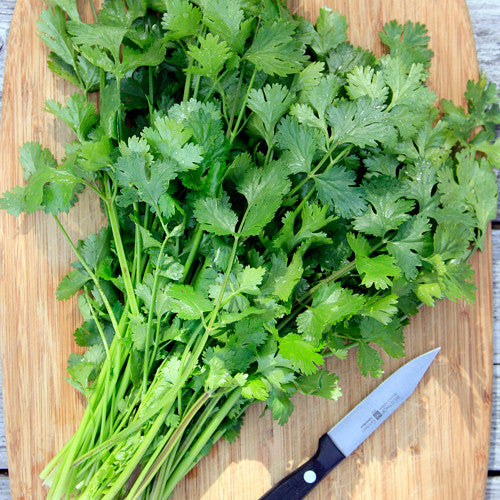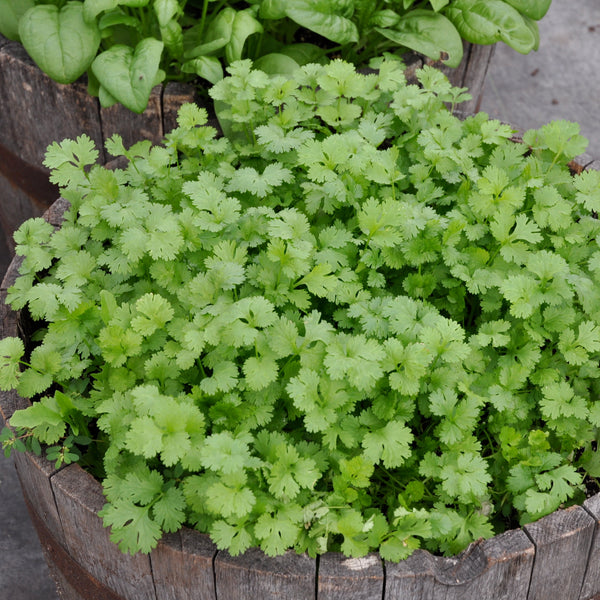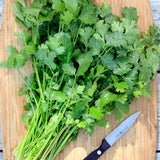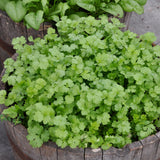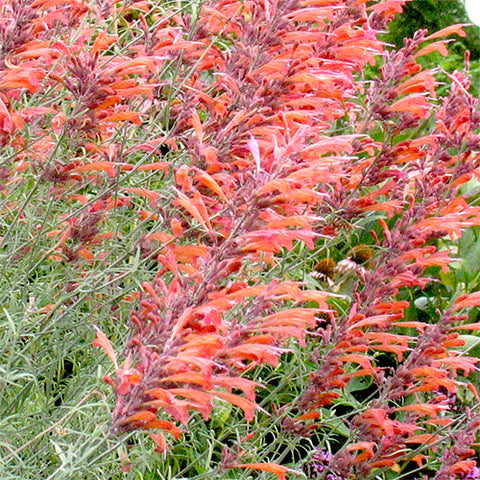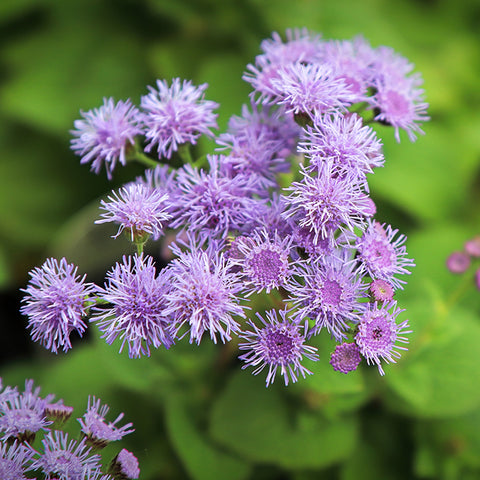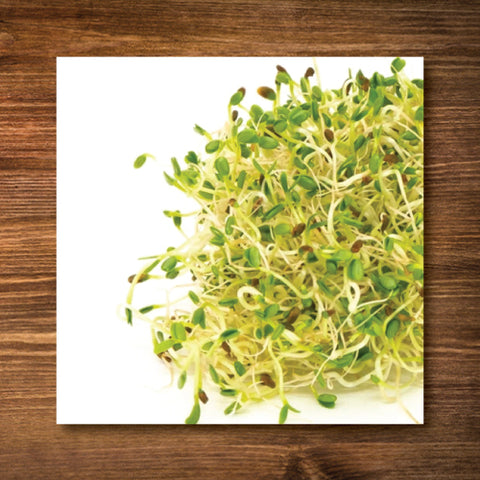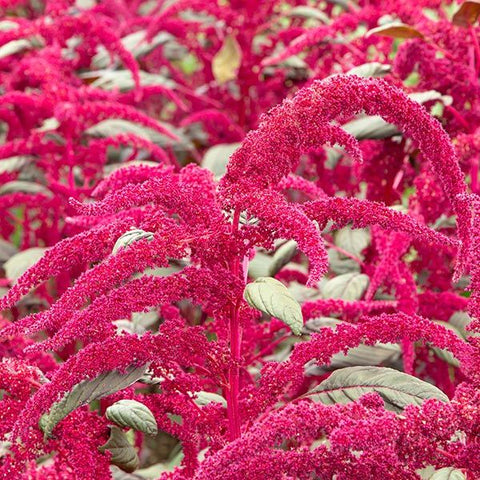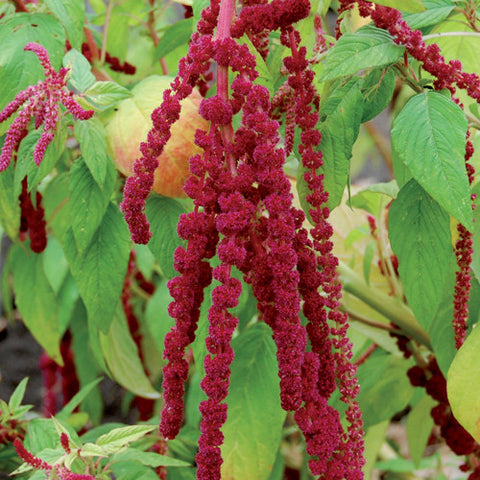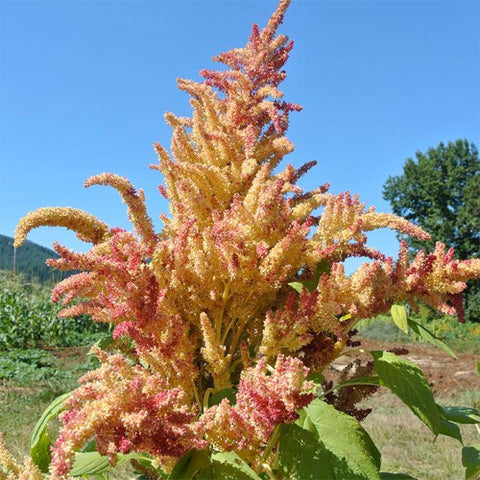Cilantro, Caribe (Certified Organic Seeds)
$4.79
This item may be out of season or currently out of stock. Please check back.
Description: Dense bunches of aromatic dark green leaves. Compared to Santo, Caribe has a slightly thinner stem, higher vigour and seed emergence, and better bolt tolerance. A great choice for greenhouse growers, or anyone who wants long-standing cilantro!
By far the best way to grow cilantro at home is to start from seed, rather than purchasing nursery-grown transplants! Direct-seeded cilantro lasts longer, does not experience transplant shock, and is a better value - not to mention it is a crop that is best planted several times through the season.
The fragrant oil from the seeds is reputed to help reduce stress (in aromatherapy).
USDA Certified Organic/ Open Pollinated/ Non-GMO
Pack Size: 3.54g (1/8oz)
Latin Name: Coriandrum sativum
Alternative Names: Chinese parsley
Main Uses: Culinary
Zone Hardiness: Reseeding annual, matures very quickly, especially in the heat.
Exposure: Part sun - requires shade from the summer sun.
Height: 30 - 45 cm (10 - 18 inches)
Flower Color: White (insignificant)
Flowering Time: All cilantro/coriander varieties flower during hot weather - once cilantro has started to flower, the best thing is to let flowers and seeds develop so as to encourage reseeding.
Certified Organic: USDA Certified Organic
Germination Instructions: Germination: 7 - 21 days at 18° C. Cilantro can be slow to germinate.
Sowing: Indoors 4 - 6 weeks before planting out. Sow 5 - 9 seeds per starter pot. For best results, apply Sea Magic™ kelp from the first watering. Apply a seedling-starter fertilizer such as Evolve Seedling once the second set of true leaves has appeared, and then alternate between the kelp and seedling starter until transplant. Outdoors, sow in mid to late May; Cilantro tolerates cooler temperatures. Direct seeding is the preferred method for starting cilantro.
Planting Depth: Push firmly into the soil.
Planting Out: Plant hardened seedlings in well-drained, fertile soil once the soil has warmed.
Notes: Growing Tips: Cilantro is short-lived; plan for multiple sows that will yield spring, summer, and early fall harvests. You can also allow Cilantro to go to seed, which allows for natural reseeding to take place throughout the season.
Harvesting: Harvest young leaves as they emerge. Plants can be cut heavily a few times; multiple sows will ensure a constant supply.
Fruiting: The seeds of the cilantro plant are the coriander spice. Harvest the fruits by cutting flowering tops when the seeds are fully formed but still green. Hang upside down in brown paper bags; seeds will mature and drop into the bags for collection.
Growing in Containers: Grows very well in larger containers and raised beds.
Fertilizing (Containers): Add 25% Sea Soil™ to potting mix at the time of transplant, then fertilize with balanced organic fertilizer every two weeks during the growing season.
Watering (Containers): Water containers deeply when the top inch feels dry to the touch. Monitor every day or two during very hot weather.
Growing in Mixed Planters: Looks great in larger mixed planters. Combine with other leafy vegetables or herbs.
Fertilizing (Garden): Plant in a garden bed amended with compost. No additional fertilizer is required.
Watering (Garden): Water young plants daily to get them established, then water only as required.
Beneficials Attracted to this Plant:
- Coriander attracts beneficial insects like tachinid flies, parasitoid wasps, and hoverflies to your garden. Cilantro plants are said to repel aphids, potato beetles, and spider mites.
- A tea made from coriander, used as a spray, will help to combat spider mites anywhere in the garden.
Garden Companions: Vegetable Companions: Asparagus, Beans, Peas, Chervil, and Spinach are enhanced when cilantro is planted nearby.
Avoid: Growing Fennel with Cilantro.
Suitability for Indoors: Not well-suited for indoors, unless under grow lights.
What about Grow Lights? Simple fluorescent grow lights are required to keep cilantro productive through the winter months. Fresh seeds should be sown every 6-8 weeks under lights.
Winter Fertilizing: Under lights, fertilize weekly with a higher nitrogen organic plant food such as fish-based fertilizer.

